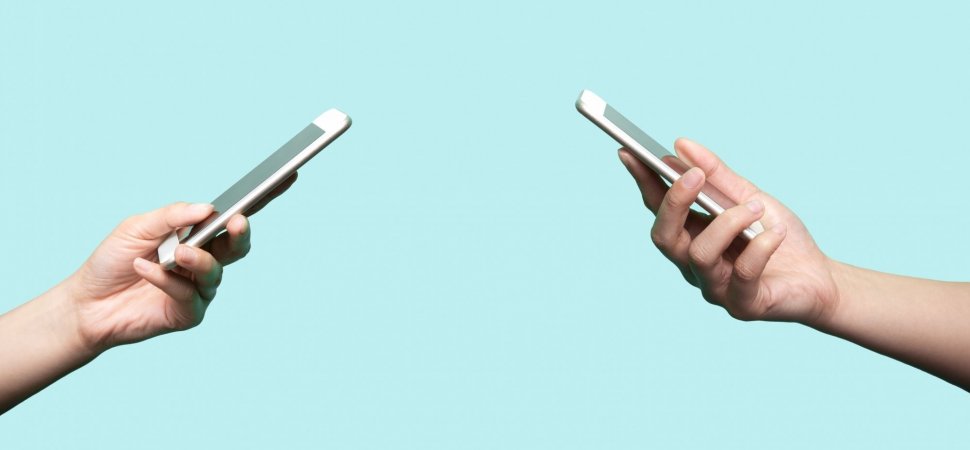We All Crave Connection
Human beings are social creatures, evolved to prosper individually by associating with others. It begins with pregnancy with the hormones, oxytocin and prolactin.
- Oxytocin is released for creating rhythmic contractions for delivery.
- Prolactin is the milk “letdown” hormone for breastfeeding.
But both also create a biochemical sense of bonding which the brain interprets as intimacy, love, and devotion. As we grow and begin to experience life and the hard knocks that come with it, we persevere the best when part of a family and, from there, when associated with social, like-minded groups, be they religious groups, athletic teams, or cliques of friends.
Nature vs Nurture
It is in our biochemistry to reach out and connect. This “evolutionary camaraderie” is crucial even to our survival. In 1944, a study was conducted to observe the effects of depriving babies nurturing: as told by the St. Paul’s Collegiate School, 40 newborns, all cared for the same via proper nutrition and hygiene, were separated into two groups—one group deprived of human contact beyond what was necessary; that is, no eye contact, cuddling, affection, holding, or communication. This unconscionable (and insane!) study was terminated after 4 months when half of the deprived babies had died.
It is doubtful human beings would have avoided extinction without neurotransmitters in the brain that allow bonding and, from that, set up cascades of other reactions that allow us to thrive.
We All Crave Happiness
The smart phone has only extended our reach, but has this translated to bonding? Neurotransmitters, hormones in the brain that activate receptors in the background, do not each have just one use. Each neurohormone has dozens of functions. In fact, oxytocin, which can be provoked by breast stimulation, and sex; it even participates in orgasm. Such neurohormones have been crucial for reproduction from our beginnings, contributing to our internal mandate to “be fruitful and multiply.”
Is bonding, however, the same as happiness? Not exactly. Other neurohormones are involved, most notably, the biochemical dopamine. Dopamine is the “reward” and “feel good” hormone, which serves as positive reinforcement to repeat beneficial actions such as eating, sex, exercising, or generally basking in any setting in which life seems good. It is also released when one is in love. And satisfying a craving for checking for messages also is related to dopamine release. When life seems good, life continues…but there’s a twist.
Can There Be Too Much Happiness?
Life seeming good and life being good are two different things. As beneficial as dopamine is, it does not have a conscience. That is, if one feels good and gets rewarded for it, this neurotransmitter cannot tell the difference between what is good for survival and what is bad for living. A perfect example is addiction, which is a major alteration of the dopamine brain circuitry. Life may seem good when one uses heroin because of the way it makes one feel, but that’s a downright lie compared to the reality. The same goes for any repeated firing of dopamine, which tends to desensitize one to its effects. Over time, one needs constant dopamine secretion to satisfy an increasing need to get the same effects, what some researchers have called the “dopamine deficiency” of addiction.
The Smart Phone: Meeting at the Corner of Socialization and Addiction
Enter the cell phone. Providing bonding, socialization, and interaction with other persons—which we are hard-wired to do—its use also engages the dopamine reward circuitry. However, when one feels good completing a review of this hour’s news feed instead of feeling good about what’s in it, this is a warning signal. In other words, when its use causes more bonding with yourself through your own dopamine reward circuitry than bonding/interacting with others, like all addictions this is self-destructive.
The cell phone has “trained” us to consult it whenever we’re bored, but this habit is insidious, evidenced by groups of persons all seated together but not “together” because they all have their phones out. Such isolation puts us at risk for development of co-occurring disorders such as anxiety and depression.
Beyond habit, there is an insidious aspect that encourages cell phone use: the feeling that you can engage with others at “arm’s length” or, “cell tower length” to maintain safety and even anonymity, seen on dating sites. However, this is not engaging with others, although your reward circuitry may not know the difference.
Addiction is Addiction is Addiction…
Whether it’s heroin, gambling, fanaticism, or cell phone use, when dopamine deficiency drives the craving for something or when the absence of that something causes anxiety, this is the profitless condition of addiction. As such, cell phone addiction is treated the same way, regardless of the substance/item abused. True, there may not be a medical downside from withdrawal, like with alcohol or opioids, but we can go back to the basics in stating that anything that interferes with our evolution to socialize, bond, and interact—in person—is as destructive to our well-being as is crucial a baby being cuddled, held, and nurtured.
